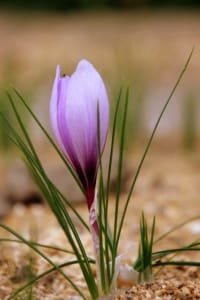The end of saffron harvest in Torbat-e Heydariyeh city
According to the governor of Torbat-e Heydarieh, this region includes Torbat-e Heydarieh, Zaveh, Mahvlat and Rashtkhar, the largest producer of saffron in the world; However, compared to last year, saffron production in Torbat-e Heydarieh has decreased by 30% and the low price of saffron and the high cost of inputs can be considered as the reasons; Saffron harvesting work is coming to an end in the most saffron region of Khorasan Razavi province, but the problems and concerns of saffron growers are not over.
These days, in the midst of the Corona epidemic, farmers and workers in southern Khorasan Razavi are spending the most violet days of autumn. Saffron is one of the most important agricultural products in the region.
In addition to the fact that this year’s saffron harvest coincided with the Corona virus epidemic and caused concerns for farmers, market fluctuations in sales and falling prices of this valuable product, which began months ago, have caused dissatisfaction and protest among many saffron growers. Perhaps one of the most important reasons for the decrease in production of this product compared to last year is the discouragement of saffron growers.
Earlier, the director of the Khorasan Razavi Rural Cooperative Organization announced the supportive purchase of saffron in six centers in Torbat-e Jam, Torbat-e Heydariyeh, Mashhad, Sabzevar, Kashmar and Gonabad.
Of course, this beautiful plant employs many workers from harvest to sale; A seasonal job that many people in the area enjoy for a while.
The governor of Torbat Heydariyeh said: the area under saffron cultivation in Torbat Heydariyeh is 8 to 9 thousand hectares and we produce about 35 to 40 tons of dry saffron per year, which is 30% less than last year.
Ali Rostami stated: Changing saffron cultivation methods in recent years, increasing the area under cultivation and water shortage, as well as warm weather are among the factors reducing saffron production. In addition, the low price of saffron and the high cost of inputs, including chemical fertilizers, which is about 12 times Last year, prices rose, discouraging farmers and reducing their motivation to take care of saffron fields, which also played an important role in reducing yields.







Get Social